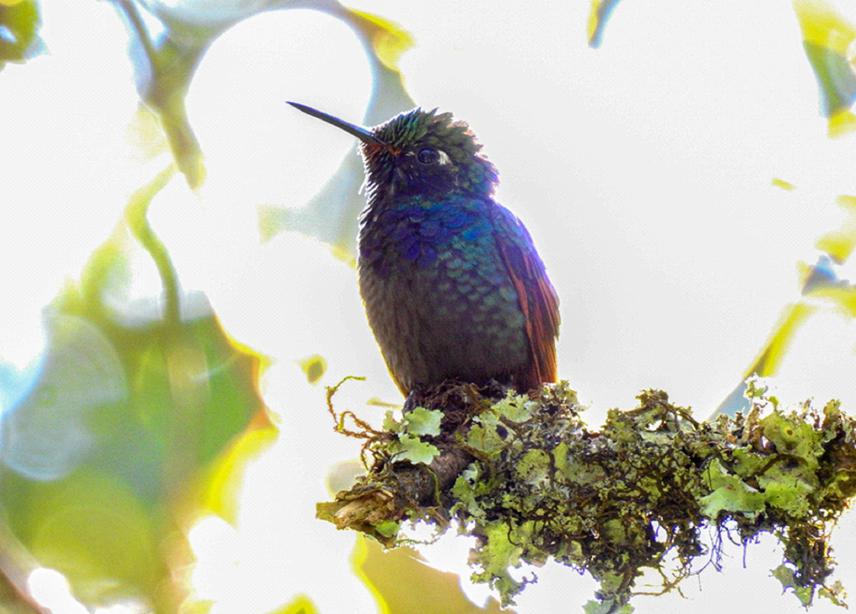Elisa Platas Valle
To establish a baseline to strengthen conservation actions for the bird community found at the cloud forest in Totontepec Villa de Morelos, Oaxaca, as well as generating a bird-based tourism proposal as part of a conservation strategy.
1. Create and train a participative bird monitoring brigade at Totontepec Villa de Morelos, Mixe, Oaxaca.
2. To enforce a monitoring strategy to confirm the presence of priority bird species for conservation and/or under a risk category on a national and/or international level.
3. Identify and establish an ‘ideal site’ network for bird watching, focusing on charismatic species with a significant value for bird-based tourism.
4. Determine local partners that will facilitate the implementation of a short-term bird-based tourism strategy.

Garnet-throated Hummingbird. © Elisa Platas Valle.
The present project remains part of an initiative to preserve the birds of Oaxaca, Mexico through the inclusion of local communities and the exploration of alternative strategies for financial income, compatible with conservation efforts.
The prime reasons for this are based on the broad diversity of birds that inhabit the large, vulnerable and nearly pristine cloud forests of Oaxaca, one of the most diverse and studied ecosystems in Mexico (Navarro-Sigüenza et al., 2014).
One of the largest and best conserved cloud forest regions in Mexico is found at Totontepec Villa de Morelos, Oaxaca. This region has been identified as a priority area for conservation efforts and urgent management, it’s part of the Mesoamerican Biological Corridor and of the Priority Region for Conservation “Sierra Norte de Oaxaca-Mixe” (CONABIO, 2010). Nonetheless, the bird community of this region has not yet been studied.
Additionally, the agrarian and municipal authorities, as well as the locals of Totontepec have demonstrated their interest and initiative in preserving their forests and implementing sustainable activities as apiculture and ecotourism. The project’s efforts will contribute to complementing such practices through the creation of a brigade with the training of community monitors to perform biological monitoring activities with a focus on bird-based tourism.
The presence of registered species on the surrounding areas will be corroborated, those with a significant probability of existence and recognized by the locals as the yellow-headed amazon (Amazona oratrix), the keelbilled toucan (Ramphastos sulfuratus), the black hawk-eagle (Spizaetus tyrannus), the ornate hawk-eagle (Spizaetus ornatus), lack-and-white hawk-eagle (Spizaetus melanoleucus), among others.
Based on the previously described, the species assembly, the closeness to paths and trails, the nearby population and topography of the site, among others (Puhakka et al., 2011; Steven et al., 2015), observation sites and trails network will be more accurately selected. This should generate an economic benefit because of the potential interest of birdwatchers to explore the site; locals will play an essential role as guides, indirectly conserving the biological diversity of the cloud forests of Totontepec Villa de Morelos.
These activities will work together to contribute to the gathering of primary information that will allow to create baselines and encourage local and governmental authorities to aim for the establishment of a voluntary conservation area, as well as promoting the academic interest of taking into action a more profound research area of the ecology of the present species.
Header: Flame-colored Tanager (Piranga bidentata).